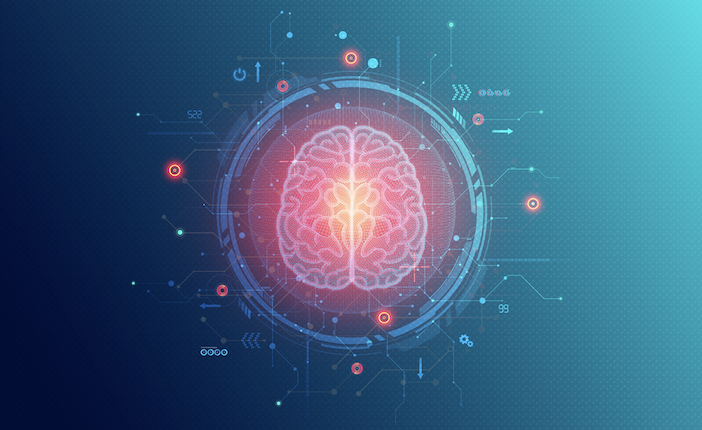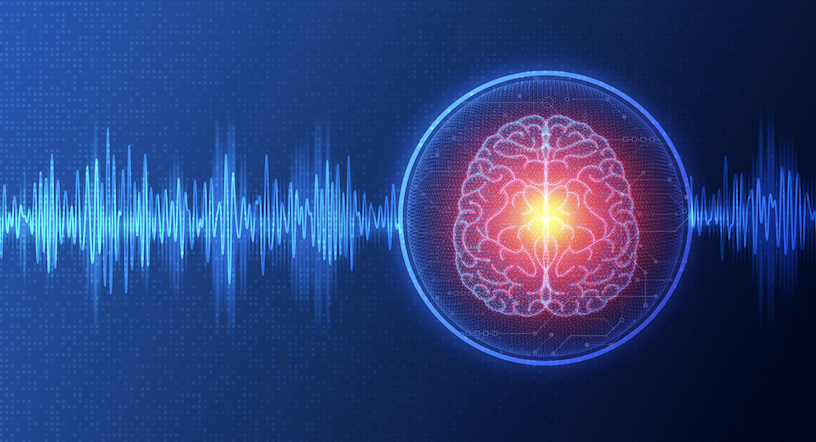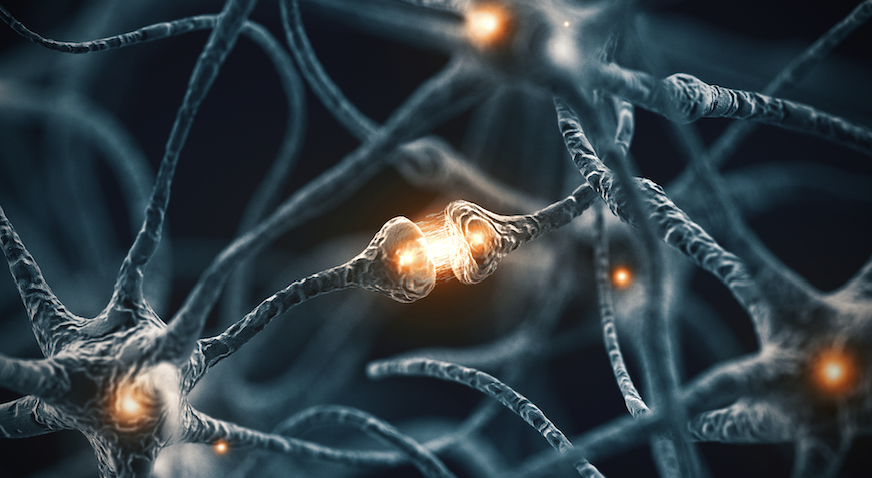Neurofeedback Part 1: How it works and benefits

If you’ve been serious about brain optimization, you may have heard of neurofeedback. In this article, part 1, we’ll cover everything you need to know about neurofeedback, from how it works to conditions that it’s been studied in.
In the next article, part 2, we’ll cover the advantages and side effects of neurofeedback, along with supplements that may make neurofeedback more effective.
What Is Neurofeedback and How Does It Work?

Neurofeedback is a concept that scientists have been studying for decades.
Neurofeedback, also known as EEG (electroencephalogram) biofeedback, is:
- A non-invasive therapeutic technique that helps train and regulate brain function
- Based on the understanding that the brain’s electrical activity, or brainwaves as measured by EEG, reflects its functioning and can be modified to enhance mental health and performance
- Allows you to control your brain waves and increase certain aspects of targeted brain activities through operant conditioning .
Our brains are made up of tiny cells called neurons that communicate with each other through electrical signals. When these neurons get active, they send out electrical pulses. Scientists can measure this activity by placing electrodes on the scalp, and the recording is called an EEG .
The EEG shows different patterns of electrical activity, or brain waves, based on their amplitudes (power) and frequencies (how fast they oscillate). The frequencies are categorized into delta, theta, alpha, beta, and gamma waves, each linked to a specific function.
For instance, delta waves show up when a person is asleep, theta waves when they’re sleepy, alpha waves when they’re relaxed but awake, beta waves when they’re alert, and gamma waves when they’re trying to solve a problem .
Neurofeedback is like a training session for your brain. You watch or listen to something, and your goal is to adjust your brain patterns based on what you see or hear. The focus of these training sessions is to learn to shift your thoughts and behaviors to produce a more desired pattern of brain wave activity. This allows the person to identify and prevent going back to the original unwanted brain activity patterns
Here Is How Neurofeedback Works

1. Assessment
A neurofeedback practitioner takes your physical, mental, and cognitive health history. They then initially assess your default brain pattern with EEG throughout your brain.
Based on this data, they may correlate the findings with known patterns with brain or mental health conditions, or specific physical health conditions. However, these EEG measurements in this context alone may not be diagnostic of any of these health conditions.
2. Goal Setting
Based on the assessment, your practitioner will help you set goals for the neurofeedback training. These goals are often related to optimizing certain brainwave patterns, such as improving cognitive function, emotional regulation, mood, empathy, discipline, or other targeted outcomes.
3. Program Design
Based on your goals and assessment, your neurofeedback practitioner will design your program. This involves:
- Targeted brainwaves
- Types of sensory inputs and feedback
- Locations of electrodes
- Frequency of training
- Duration of sessions
- Any other actions you need to take, such as avoiding coffee or certain foods, affirmations, exercise, and sleep requirements
Many practitioners specialize in specific types of training or health conditions, so they may be more inclined to use the programs they’re familiar with.
3. Feedback Display
During a neurofeedback session, you’ll receive visual or auditory feedback that reflects your current brainwave activity. This feedback is presented in real time, allowing the individual to observe and become aware of their brain’s patterns.
4. Operant Conditioning
The individual is encouraged to consciously or unconsciously modify their brainwave activity to achieve the desired patterns. Positive feedback (e.g. visual changes on a screen or auditory signals) is provided when the brain produces the targeted patterns, reinforcing the desired changes.
5. Repetition and Learning
Through repeated sessions, the brain gradually learns to self-regulate and produce the desired patterns more consistently. This process is akin to training a muscle; the brain develops new, more adaptive neural pathways over time.
6. Progress Monitoring
Progress is continuously monitored either with EEG or other perceived changes, and adjustments to the neurofeedback protocol are made as needed. This ensures that the training remains tailored to the individual’s evolving brain activity.
Neurofeedback Benefits

While individual experiences may vary, here are some potential benefits associated with neurofeedback.
Keep in mind that treating diseases with neurofeedback falls within the scope of practice for medical doctors and psychotherapists. You should see a neurofeedback-trained doctor if you have these conditions and are interested in treating them with neurofeedback.
1. Improved Focus and Attention
Although research has produced mixed results, neurofeedback may help individuals enhance their ability to concentrate and maintain attention, making it particularly beneficial for conditions like ADHD .
ADHD symptoms include inattention, distractibility, hyperactivity, and extreme dispassionateness. Neurofeedback therapy aims to normalize behavior without relying on medications that can have negative side effects .
In ADHD treatment, the goal is to decrease brain activity in the theta band and increase activity in the beta band. Neurofeedback has shown long-term improvement in ADHD compared to traditional medications. Neurofeedback is effective in reducing hyperactivity, improving focus, academic performance, parental satisfaction, and indicators of sustained attention .
In one study, 130 children with ADHD were randomly selected to receive either medication, neurofeedback and medication, or just neurofeedback treatment. Results collected included improvements in core ADHD symptoms, such as attention and hyperactivity, as reported by the parents .
According to this study, neurofeedback produced similar improvements as ADHD medications, highlighting the comparable efficacy of neurofeedback to a commonly prescribed medication.
The results suggest that neurofeedback can be a valuable alternative therapy for children and adolescents with ADHD, particularly the 20% who do not respond to medications. Additionally, the findings support the idea of reducing medication reliance when combining neurofeedback with other ADHD treatments .
Another study on the efficacy of neurofeedback on adults with ADHD found mixed results. The study aimed to investigate the short and longer-term effects of two kinds of neurofeedback; SCP (slow cortical potential) and fNIRS (functional near-infrared spectroscopy) to a control group (EMG-BF).
All 84 participants in the study showed symptom improvements, but the fNIRS group, especially learners, demonstrated superior outcomes in ADHD symptoms and impulsivity ratings at the 6-month follow-up.
Neurofeedback involves learning to regulate brain activity. SCP focuses on slow electrical shifts in the brain, while fNIRS measures blood flow changes using light. The findings suggest that fNIRS neurofeedback, when learned effectively, can have specific and lasting benefits for adult ADHD .
One double-blind, sham-controlled randomized controlled trial of fMRI neurofeedback for boys with ADHD found that neurofeedback made no improvements in ADHD. In fact, the sham group showed reduced irritable mood and improved motor inhibition post-treatment. The study suggests that fMRI neurofeedback may not be an effective treatment for ADHD .
Given the mixed effectiveness of neurofeedback on ADHD in the literature, it’s possible that individual responses to each type of neurofeedback may vary. This makes sense given that ADHD can vary widely from case to case.
2. Mood Regulation and Enhancement
The inability to regulate your mood is linked to decreased metabolism in specific brain areas. Neurofeedback training targets increasing alpha and theta while inhibiting faster beta frequencies, significantly improving mood regulation .
Training with neurofeedback has been linked to reduced stress levels, helping individuals achieve a calmer and more relaxed state . Alpha training, aiming to counteract the inhibitory effect of anxiety on alpha waves, is used to relieve anxiety symptoms .
One study aimed to investigate the effect of mindfulness regulation through neurofeedback on 34 individuals; 17 of whom were diagnosed with anxiety disorder and the other 17 were healthy.
The results showed a positive effect on both types of subjects. Specifically, there was an increase in the average power of gamma waves, which was interpreted as indicating relief from anxiety. The enhancement of wave power also suggested an improvement in the subjects’ mindfulness ability .
The study suggests that neurofeedback mindfulness regulation can effectively influence the brain activity pattern of individuals with anxiety disorder, leading to relief from anxiety symptoms and improvements in mindfulness abilities .
Another study assessed the efficacy of neurofeedback in individuals with chronic PTSD. 52 participants were randomized into neurofeedback and waitlist groups. Neurofeedback training occurred twice weekly for 12 weeks, targeting PTSD symptoms. Post-treatment, a significantly smaller proportion of the neurofeedback group (27.3%) met PTSD criteria compared to the waitlist group (68.2%).
There was a significant interaction between treatment condition and time, indicating the effectiveness of neurofeedback in reducing PTSD symptoms. The study concludes that neurofeedback warrants further investigation as a potential treatment for chronic PTSD, emphasizing its positive impact on symptom reduction and affect regulation capacities .
3. Better Sleep
Neurofeedback has demonstrated considerable potential in effectively addressing sleep-related challenges, particularly difficulty falling asleep. By actively contributing to the enhancement of sleep patterns, neurofeedback offers a promising avenue for individuals seeking not only faster sleep onset but also more restful and improved overall sleep quality .
Although more research is still needed to evaluate the efficacy of neurofeedback in alleviating sleep disorders, several studies suggest neurofeedback improves sleep. However, such effects have also been attributed to possible placebo effects .
One double-blind, placebo-controlled study tested the efficacy of neurofeedback on 25 patients with insomnia. One group received actual neurofeedback sessions, and the other group received sham treatments. Both neurofeedback and placebo feedback were found to be equally effective in improving subjective measures of sleep complaints .
The study did not find an advantage of neurofeedback over placebo feedback, and therefore, it could not be recommended as an alternative to cognitive behavioral therapy for sleep, which is considered the current (non-pharmacological) standard-of-care treatment .
A common beneficial side effect of neurofeedback is temporarily improved sleep on days of training. Possibly, this is because neurofeedback can be very taxing on the brain.
4. Cognitive Enhancement and Language Skills
Neurofeedback has emerged as a transformative influence in the realm of learning disability treatment, specifically for conditions such as dyslexia, characterized by challenges in reading and spelling, and dyscalculia, involving difficulties in mathematics. The therapeutic approach entails the augmentation of alpha wave activity to effectively target and ameliorate these learning disorders .
Notably, individuals undergoing neurofeedback interventions have reported noteworthy enhancements in various cognitive domains. These include improvements in memory, heightened problem-solving skills, and an overall increase in mental clarity .
One study tested how neurofeedback treatment affects working memory (WM) in children with learning disorders. The study involved 18 children aged 8 to 11 years with learning disorders, they underwent either a neurofeedback treatment (NFB-group) or a placebo-sham treatment (sham-group) for 30 sessions.
Post-treatment, the NFB group demonstrated faster response times in the WM task. Additionally, there were changes in the WM-related EEG power spectrum, including decreased theta power and increased beta and gamma power at frontal and posterior sites, indicating improved efficiency of neural resource management, maintenance of memory representations, and enhanced subvocal memory rehearsal .
Another study suggests that neurofeedback substantially improves spelling for dyslexic children. This study addressed reading and spelling deficits in dyslexic children through neurofeedback training based on neurophysiological differences.
Nineteen participants were randomized into an experimental group receiving neurofeedback and a control group, both receiving remedial teaching. The experimental group showed substantial spelling improvement .
However, a study comparing the efficacy of Cognitive Rehabilitation (CR) and neurofeedback found that neurofeedback is not as effective as CR in children with specific learning disorders. 53 elementary school students with Specific Learning Disorders were randomly assigned to neurofeedback, CR, or a control group.
After 20 sessions, the Continuous Performance Test (CPT) revealed a significant difference between groups, with the CR group outperforming neurofeedback. The study concludes that CR is more effective than neurofeedback in improving SA in students with Specific Learning Disorders .
5. Addiction
Neurofeedback may enhance the effectiveness of treatment for individuals struggling with substance abuse. While some studies note improvements in specific symptoms rather than overall quality of life or drug use, neurofeedback appears to address aspects of addiction beyond the reach of conventional treatments alone .
One study treated ten adults addicted to cocaine with 12 neurofeedback sessions combined with motivational interviewing. The study did not have a specific control group. After the treatment, participants showed decreased reactions to drug-related images.
Clinical evaluations revealed reduced self-reported depression and stress, along with fewer instances of cocaine and marijuana use. The study suggests that neurofeedback has the potential to be a beneficial intervention for addiction .
In another study, researchers randomly divided 93 participants with substance abuse disorders into two groups, one receiving 20 sessions of neurofeedback combined with the conventional treatment they were already receiving, and the other group only receiving conventional treatment.
Although the study did not find improvement in overall quality of life or reduction in drug use, it found that those receiving both neurofeedback as well as conventional treatment were less restless than those who only received conventional treatment. This study suggests that the use of neurofeedback can help alleviate symptoms that conventional treatment alone may not be able to target .
In a randomized, controlled trial researchers investigated the use of neurofeedback on 100 crystal methamphetamine-dependent (CMD) patients undergoing medical treatment. The treatment duration was two months, consisting of 30 sessions of neurofeedback for the experimental group, in addition to their usual medication. There was a control group that received only their usual medication.
The results showed that the experimental group had lower addiction severity, better psychological health, and improved quality of life compared to the control group. The differences between the two groups suggest that neurofeedback can enhance the effectiveness of treatment for CMD patients .
6. Autism Spectrum Disorder (ASD)
ASD is a neurodevelopmental condition characterized by enduring challenges that extend into adulthood. Children with ASD encounter obstacles in diverse domains, including social interactions, communication, and behavior, often exhibiting idiosyncratic behavioral patterns .
Neurofeedback emerges as a valuable tool for supporting children with ASD. Studies show improvements in cognitive functions, social skills, and behavior after sessions. Tailored neurofeedback, guided by assessments, effectively addresses core ASD symptoms .
A study examining the efficacy of neurofeedback in treating ASD involved 42 children diagnosed with autism who underwent 40 neurofeedback sessions. After the therapy, the children showed improvements in their thinking, social skills, and attention.
The study suggests that neurofeedback could be a helpful treatment tool for reducing cognitive challenges in children with autism, indicating a positive potential for its effectiveness in enhancing their overall cognitive functions .
In another study, researchers worked with two groups, one with ASD and another with typically developing (TD) children. The ASD group, consisting of 13 participants, received approximately 30 hours of neurofeedback sessions, while the TD group served as a control. The goal was to investigate changes in behavior and brain activity associated with social behaviors, particularly in the Mirror Neuron System (MNS).
The findings revealed that neurofeedback sessions had positive effects on the ASD group, showing improvements in behavior and increased engagement of the MNS. However, in the TD group, the results indicated a different response, suggesting that the impact of neurofeedback varied between children with ASD and typically developing children .
These outcomes highlight the potential effectiveness of neurofeedback in improving social behavior in children with ASD, offering a promising avenue for intervention in neurodevelopmental conditions .
Yet another study found that neurofeedback can be an effective treatment for ASD especially when guided by assessments. The controlled study involved 37 participants with ASD. The study found that those who received neurofeedback showed an 89% success rate in improving ASD symptoms, with significant improvements compared to the control group.
The treatment led to a 40% reduction in core ASD symptoms and a 76% decrease in hyperconnectivity, the presence of too many connections between different parts of the brain .
7. Epilepsy
Neurofeedback may contribute to a reduction in the frequency and severity of seizures in individuals with epilepsy. It is proposed that by training individuals to regulate their brainwave patterns, specifically reducing abnormal electrical activity, neurofeedback can help minimize the occurrence of seizures .
Neurofeedback focuses on modulating specific brainwave frequencies. For epilepsy, the emphasis is on inhibiting abnormal patterns associated with seizures, such as slowing down theta waves or enhancing beta waves .
A study explored whether two types of neurofeedback, SMR and slow cortical potentials (SCP), could help children and teens with controlled focal epilepsy. This study consisted of 44 participants with controlled focal epilepsy. There was a control group that received sham neurofeedback.
The participants were divided into three groups: one received sensorimotor rhythm (SMR) neurofeedback, another received SCP neurofeedback, and the third had sham neurofeedback. SMR neurofeedback trains individuals to regulate and control a specific brainwave that has an effect on attention and cognitive performance.
SCP neurofeedback works similarly, helping individuals regulate brainwave thought to influence neurological functions tied to attention and cognitive processes.
The conclusions of the study suggest that SMR neurofeedback had positive effects on attention, both active and sham neurofeedback groups showed improvements in quality of life, and there was a trend for potential reduction in seizure frequency with SMR and SCP.
The study indicates that these neurofeedback approaches could positively affect cognitive performance, quality of life, and possibly seizures in children and adolescents with controlled focal epilepsy .
8. Performance Enhancement
Neurofeedback training demonstrates promising benefits for athletic performance. It helps improve athletes’ skills, confidence, and overall performance in various sports .
Researchers worked with seven healthy swimmers aged 18 to 25 over four months, having them undergo 20 neurofeedback training sessions. The results showed positive changes in the swimmers’ work curve during exercise, indicating improved mental performance.
Additionally, the study suggested that neurofeedback training impacted optimizing psychomotor activities. The changes observed were not huge, but they indicated trends toward better attention engagement during physical activities .
Athletes who participate in sports that require high-level physical balance can benefit from neurofeedback. In one study, 18 judo athletes participated in a double-blind controlled experiment where some received neurofeedback training, and others did not. Those who received neurofeedback training significantly improved their dynamic balance .
In 2010, research involving Canadian athletes at the Vancouver Olympics revealed that employing neurofeedback (NFB) enhanced their ability to manage stress, leading to improved performance at the Olympics compared to the preceding year .
Conclusion:
Neurofeedback offers a non-invasive approach to enhancing mental health and performance. By training individuals to consciously control their brain waves, neurofeedback may help with a spectrum of conditions, from ADHD and mood regulation to sleep disorders and cognitive enhancement.
Remember that treating these conditions falls within the scope of practice for psychotherapists and medical doctors who employ neurofeedback as a tool in their toolboxes. Nowadays, there are many direct-to-consumer neurofeedback tools out there that promote well-being, calmness, and cognitive performance.
The method involves real-time feedback, operant conditioning, and repetition, promoting neuroplasticity. While benefits include improved focus, mood regulation, and better sleep, individual experiences may vary .
Neurofeedback’s efficacy extends to diverse areas that involve changing brain functions and patterns. Moreover, it stands out for being non-invasive, customizable, and potentially yielding long-term benefits. As with any therapy, it’s important to address potential side effects and consider taking supplements for maximum support.
Now that you’ve learned about what neurofeedback and what it helps with, check out part 2: neurofeedback advantages and side effects, and support supplements.
References:
- Arns, M., & Kenemans, J. L. (2014). Neurofeedback in ADHD and insomnia: vigilance stabilization through sleep spindles and circadian networks. Neuroscience and Biobehavioral Reviews, 44, 183–194.
- Azizi, A., Mir Drikvand, F., & Sepahvani, M. A. (2020). Comparison of the Effect of Cognitive Rehabilitation and Neurofeedback on Sustained Attention Among Elementary School Students With Specific Learning Disorder: A Preliminary Randomized Controlled Clinical Trial. Basic and Clinical Neuroscience, 11(4), 465–472.
- Barth, B., Mayer-Carius, K., Strehl, U., Wyckoff, S. N., Haeussinger, F. B., Fallgatter, A. J., & Ehlis, A.-C. (2021). A randomized-controlled neurofeedback trial in adult attention-deficit/hyperactivity disorder. Scientific Reports, 11(1), 16873.
- Breteler, M. H. M., Arns, M., Peters, S., Giepmans, I., & Verhoeven, L. (2010). Improvements in spelling after QEEG-based neurofeedback in dyslexia: a randomized controlled treatment study. Applied Psychophysiology and Biofeedback, 35(1), 5–11.
- Chen, C., Xiao, X., Belkacem, A. N., Lu, L., Wang, X., Yi, W., Li, P., Wang, C., Sha, S., Zhao, X., & Ming, D. (2021). Efficacy Evaluation of Neurofeedback-Based Anxiety Relief. Frontiers in Neuroscience, 15, 758068.
- Coben, R., & Padolsky, I. (2007). Assessment-guided neurofeedback for autistic spectrum disorder. Journal of Neurotherapy, 11(1), 5–23.
- Duric, N. S., Assmus, J., Gundersen, D., & Elgen, I. B. (2012). Neurofeedback for the treatment of children and adolescents with ADHD: a randomized and controlled clinical trial using parental reports. BMC Psychiatry, 12, 107.
- Fotuhi, M. (2019, June 14). Neurofeedback: What it is and how it works | NeuroGrow. https://neurogrow.com/neurofeedback-complete-guide/
- Gabrielsen, K. B., Clausen, T., Haugland, S. H., Hollup, S. A., & Vederhus, J.-K. (2022). Infralow neurofeedback in the treatment of substance use disorders: a randomized controlled trial. Journal of Psychiatry & Neuroscience: JPN, 47(3), E222–E229.
- Horrell, T., El-Baz, A., Baruth, J., Tasman, A., Sokhadze, G., Stewart, C., & Sokhadze, E. (2010). Neurofeedback Effects on Evoked and Induced EEG Gamma Band Reactivity to Drug-related Cues in Cocaine Addiction. Journal of Neurotherapy, 14(3), 195–216.
- Lambert-Beaudet, F., Journault, W.-G., Rudziavic Provençal, A., & Bastien, C. H. (2021). Neurofeedback for insomnia: Current state of research. World Journal of Psychiatry, 11(10), 897–914.
- Lam, S.-L., Criaud, M., Lukito, S., Westwood, S. J., Agbedjro, D., Kowalczyk, O. S., Curran, S., Barret, N., Abbott, C., Liang, H., Simonoff, E., Barker, G. J., Giampietro, V., & Rubia, K. (2022). Double-Blind, Sham-Controlled Randomized Trial Testing the Efficacy of fMRI Neurofeedback on Clinical and Cognitive Measures in Children With ADHD. The American Journal of Psychiatry, 179(12), 947–958.
- Luigjes, J., Breteler, R., Vanneste, S., & de Ridder, D. (2013). [Neuromodulation as an intervention for addiction: overview and future prospects]. Tijdschrift voor psychiatrie, 55(11), 841–852.
- Martínez-Briones, B. J., Bosch-Bayard, J., Biscay-Lirio, R. J., Silva-Pereyra, J., Albarrán-Cárdenas, L., & Fernández, T. (2021). Effects of Neurofeedback on the Working Memory of Children with Learning Disorders-An EEG Power-Spectrum Analysis. Brain Sciences, 11(7). https://doi.org/10.3390/brainsci11070957
- Marzbani, H., Marateb, H. R., & Mansourian, M. (2016). Neurofeedback: A Comprehensive Review on System Design, Methodology and Clinical Applications. Basic and Clinical Neuroscience, 7(2), 143–158.
- Maszczyk, A., Gołaś, A., Pietraszewski, P., Kowalczyk, M., Cięszczyk, P., Kochanowicz, A., Smółka, W., & Zając, A. (2018). Neurofeedback for the enhancement of dynamic balance of judokas. Biology of Sport / Institute of Sport, 35(1), 99–102.
- Mekkawy, L. (2021). Efficacy of neurofeedback as a treatment modality for children in the autistic spectrum. Bulletin of the National Salmon Resources Center , 45(1), 45.
- Mikicin, M., Mróz, A., Karczewska-Lindinger, M., Malinowska, K., Mastalerz, A., & Kowalczyk, M. (2020). Effect of the Neurofeedback-EEG Training During Physical Exercise on the Range of Mental Work Performance and Individual Physiological Parameters in Swimmers. Applied Psychophysiology and Biofeedback, 45(2), 49–55.
- Morales-Quezada, L., Martinez, D., El-Hagrassy, M. M., Kaptchuk, T. J., Sterman, M. B., & Yeh, G. Y. (2019). Neurofeedback impacts cognition and quality of life in pediatric focal epilepsy: An exploratory randomized double-blinded sham-controlled trial. Epilepsy & Behavior: E&B, 101(Pt A), 106570.
- Neurofeedback. (n.d.). Psychology Today. Retrieved January 26, 2024, from https://www.psychologytoday.com/us/therapy-types/neurofeedback
- Orndorff-Plunkett, F., Singh, F., Aragón, O. R., & Pineda, J. A. (2017). Assessing the Effectiveness of Neurofeedback Training in the Context of Clinical and Social Neuroscience. Brain Sciences, 7(8). https://doi.org/10.3390/brainsci7080095
- Pineda, J. A., Carrasco, K., Datko, M., Pillen, S., & Schalles, M. (2014). Neurofeedback training produces normalization in behavioural and electrophysiological measures of high-functioning autism. Philosophical Transactions of the Royal Society of London. Series B, Biological Sciences, 369(1644), 20130183.
- Rostami, R., & Dehghani-Arani, F. (2015). Neurofeedback Training as a New Method in Treatment of Crystal Methamphetamine Dependent Patients: A Preliminary Study. Applied Psychophysiology and Biofeedback, 40(3), 151–161.
- Rydzik, Ł., Wąsacz, W., Ambroży, T., Javdaneh, N., Brydak, K., & Kopańska, M. (2023). The Use of Neurofeedback in Sports Training: Systematic Review. Brain Sciences, 13(4). https://doi.org/10.3390/brainsci13040660
- Schabus, M., Griessenberger, H., Gnjezda, M.-T., Heib, D. P. J., Wislowska, M., & Hoedlmoser, K. (2017). Better than sham? A double-blind placebo-controlled neurofeedback study in primary insomnia. Brain: A Journal of Neurology, 140(4), 1041–1052.
- van der Kolk, B. A., Hodgdon, H., Gapen, M., Musicaro, R., Suvak, M. K., Hamlin, E., & Spinazzola, J. (2016). A Randomized Controlled Study of Neurofeedback for Chronic PTSD. PloS One, 11(12), e0166752.
- What happens during a neurofeedback session? (2019, July 18). Brainworks Neurofeedback | The UK’s Neurofeedback Leaders since 2007. London Clinic, Home Training and Industry Software Developers; Brainworks Neurotherapy. https://brainworksneurotherapy.com/about/neurofeedback-sessions/
Share this article using the buttons below

Dr. Nattha Wannissorn, PhD, is a scientist who makes health research accessible to the general public through health and wellness blogs. She received her PhD in Molecular Genetics from the University of Toronto and BA in Molecular & Computational Biology from the University of Pennsylvania.
You'll enjoy these posts
Based on your reading history, we think you'll enjoy these posts...
